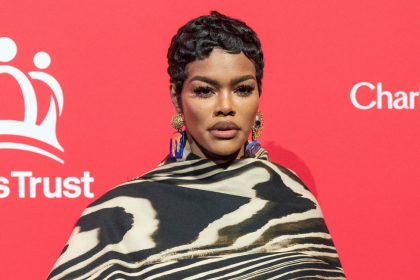Tia Mowry found child stardom to be “tough”. The entertainment industry has long been scrutinized for its treatment of young performers, with many child actors experiencing significant psychological challenges during their careers.
The 46-year-old actress starred opposite her twin sister Tamera Mowry in Sister, Sister, the hit TV sitcom, in the 90s – but Tia now admits that she struggled to cope with the stresses and strains of fame at such a young age. The show became a cultural phenomenon and remains popular in syndication, reaching audiences across multiple generations.
“Being a child actor definitely came with its pros and cons. On the plus side, it taught me responsibility early on. By the time I got to college, I already knew what it meant to show up for work, have call times, and stay disciplined. But growing up in front of the world? That part was tough. You’re still figuring out who you are, and everyone has an opinion,” Tia explained in response to a fan question on Instagram. Child psychology experts note that adolescents typically need privacy and space to develop their identity, something difficult to achieve under constant public scrutiny.
Tia appreciated being able to lean on her twin sister for support. Having a sibling who understood the unique pressures of the entertainment industry provided crucial emotional stability that peers outside the business couldn’t offer.
However, the actress still regrets that she didn’t get to experience a normal childhood. Many child actors miss significant amounts of school and social activities during active filming periods, impacting their overall development.
“I’m grateful I had my sister and family to keep me grounded. But… I didn’t get to experience childhood the same way, especially when it came to things like dating. I was focused on work. And while I’m proud of that, I also think kids need space to just be kids and learn who they are,” she said. Child development specialists emphasize that unstructured play time and social interaction are essential for healthy emotional growth.
Meanwhile, Tia previously claimed that she encountered pay inequality and racial bias during her younger years. These experiences reflect broader systemic issues that have plagued Hollywood for decades, with numerous actors speaking out about discriminatory practices in the industry.
The actress recalled being treated differently to some of her co-stars. Such disparities were often visible in the basic amenities and respect afforded to different performers on set.
“It was very evident to me when I would walk on sets and see how certain stars or actors would be treated who weren’t of ethnicity – better dressing room, better trailer,” Tia explained, speaking on her web series, Tia Mowry’s Quick Fix. Film industry analysts have documented how production resources were often allocated differently based on the racial composition of cast members.
“Now I’m like, more aware what that was, which is a budget, but back then I didn’t know what a budget was. It was so clear how you would see one show that didn’t have a diverse cast that just had a bigger budget so everything just seemed bigger and better. But when it came to my projects and what I was doing, you actually really visually saw the less-than.” The disparity in production values between diverse and non-diverse shows was particularly noticeable during the era when Sister, Sister was filmed.
The entertainment industry has begun addressing these disparities in recent years. New legislation in several states now requires better protection for child actors, including mandatory education requirements and financial safeguards. Additionally, diversity and inclusion initiatives have led to more equitable treatment and compensation for performers of all backgrounds.
Tia‘s candid reflections highlight the complex reality of child stardom, where early success often comes at the cost of normal developmental experiences. Her story resonates with many former child actors who have spoken about similar challenges, including difficulties with identity formation and maintaining healthy relationships.
Despite these obstacles, Tia has successfully transitioned into adult roles and remains active in both television and film. Her openness about her experiences has contributed to important conversations about reforming industry practices to better protect young performers.
The actress’s journey from child star to accomplished adult performer demonstrates remarkable resilience and personal growth. Her willingness to discuss both the positive and negative aspects of her early career provides valuable insights for current and aspiring young performers, as well as their families navigating the entertainment industry.
Today, organizations dedicated to protecting young performers continue working to improve conditions for child actors, ensuring that future generations can pursue their dreams while maintaining their well-being and preserving essential childhood experiences that shape healthy development.















